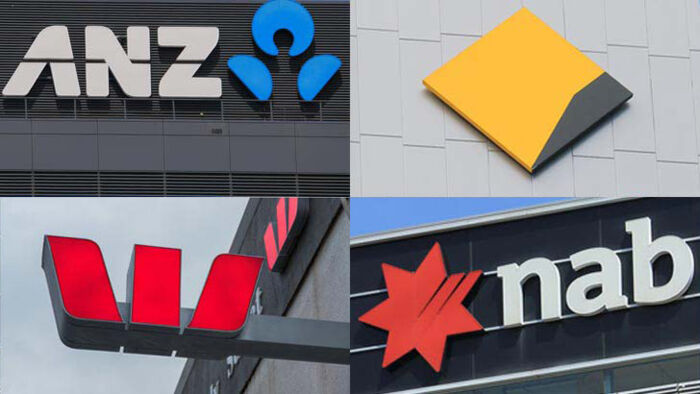How to get more bank for your buck in this economy
By Jessica Amir
A high interest rate, high inflation environment isn't just a concern for Australian consumers. The big banks are also feeling the pain too. The cash rate is currently sitting at a six-year high, while 30-year high inflation has affected people's spending habits. It's a perfect storm of poor conditions.
For those who have shares in Australian banks, don't expect to receive the record dividends that banks have paid in the past any time soon. Lending has slowed, and savings rates have and banks' profits have slowed down as a result. The peak of inflation is still to come, so this sluggishness will only continue.
As many may have noticed, it's not all sunshine and rainbows for the big banks at the moment. However, some regional banks have made the best of the current economic conditions and achieved better growth rates than their larger compatriots. Here's where things stand for the Australian banking sector.
Big banks are feeling the effects of inflation
When interest rates rise, the typical wisdom is that banks make more money due to their margins increasing.
However, this isn't the case now; as higher interest rates imposed by banks are driven by the RBA's aggressive upward cash rate adjustments, all to combat record high runaway inflation.
Consumers are borrowing less, and property prices are falling, but the interest banks are charging for loans is rising. On the flip side, banks are paying out more interest to finance their lending activities.
And banks are also paying out more interest on savings and bonds that consumers have with the bank. But that pool is less, as savings rates have fallen. And these trends look to continue. So it seems like a zero-sum game, and with the added burden of other operating costs shooting up, the big banks are feeling the heat.
Basically, inflation has hit a 30 year high, and people's spending behaviours have changed so they can try to weather the storm. People are being forced to spend more on groceries and petrol, while also trying to make steeper mortgage repayments. These facts have meant that people have tightened their belts across the country, and people are borrowing less.
The double whammy of declining profit margins and lending activity has hit the big banks, and things might not change in the near future. If inflation remains a runaway train, then this will further affect how much people choose to borrow. A less than ideal period might be around the corner for the big banks of Australia.
NAB's housing loan growth outshines the rest of the big four
Out of the big four banks, NAB has seen the most housing loan growth, taking market share from the other three.
In contrast, ANZ's loan growth has declined on a one-year basis.
Despite there being a glimmer of hope amongst the big four banks, declining margins are expected to bite. Bank share prices are down on where they were this time last year, and the outlook for banks focused on lending is dimmer than it was two years ago.
Keep an eye on the regional banks
Recent data suggests that regional banks could continue to report better growth rates than the big banks.
Bendigo and Adelaide Bank appear to be leading the pack with their housing loans growing by approximately 11%. In fact, Money magazine named Bendigo Bank home lender of the year in 2021, and it appears that consumers are increasingly drawn to the personal touch that regional banks can provide.
Banking on commodities
Macquarie Group might also be the showstopper of the lot. As we know, inflation and commodity prices are firm friends.
Amid the current climate, commodity prices have been growing and market trading has been picking up. Macquarie makes handsome profits (almost triple digit growth) from these divisions. So, it's well worth keeping an eye on their upcoming activity.
Don't expect inflation to end any time soon
The Consumer Price Index (CPI) rose 1.8% last quarter, and has risen 6.1% since this time last year.
Goods largely drove last quarter's rise, accounting for 79% of the rise. Of particular note is the 4.2% rise in the price of automotive fuel. Automotive fuel prices have risen for the eighth consecutive quarter and is expected to continue going up. As such, people are going to feel the pinch, especially when the current 22.1c/litre reduction to the fuel excise ends at the end of September.
We also know, another big component on inflation is utility bills, and given coal is where Australia get most of its energy from and the coal futures price (an indiciation of where the coal price will likely go), is higher than where it is now, and we are not event at peak coal demand season, we are expecting inflation to get much worse.
Coal demand usually peaks in January as the biggest consumers of coal pick up demand and push up the commodity price, and this is likely to push up energy bills in Australia to new records.
So for as long as there is inflation, there is expected to be higher for longer interest rates. This is bleak when it comes to home loans.
Consensus expectations are that rates will rise to 3.9% by mid-next year, increasing the average annual mortgage payment by almost $7,000. With countless home buyers taking out loans over the last two years with the expectation that the Reserve Bank of Australia wouldn't raise rates until 2024, it is estimated that approximately 2.5 million Australians with mortgages don't have buffers.
Don't be surprised if many homeowners are forced to sell in the near future, resulting in a drop in property prices. This in turn is potentially contagious and may affect other homeowners, who as a result may face difficulties in refinancing their mortgages due to lower home valuations.
Banks have long been a beneficiary of Australia's property boom.
However, faced by a margin squeeze brought on by rate hikes as well as declining loans and property valuations, the short-to-medium-term prospects for banks don't look too certain.
If you so choose to put your money in banks right now, investment wise, look out for challenger ones with larger exposure to the commodities sector or those who are hot on the tails of the big four.
Get stories like this in our newsletters.



